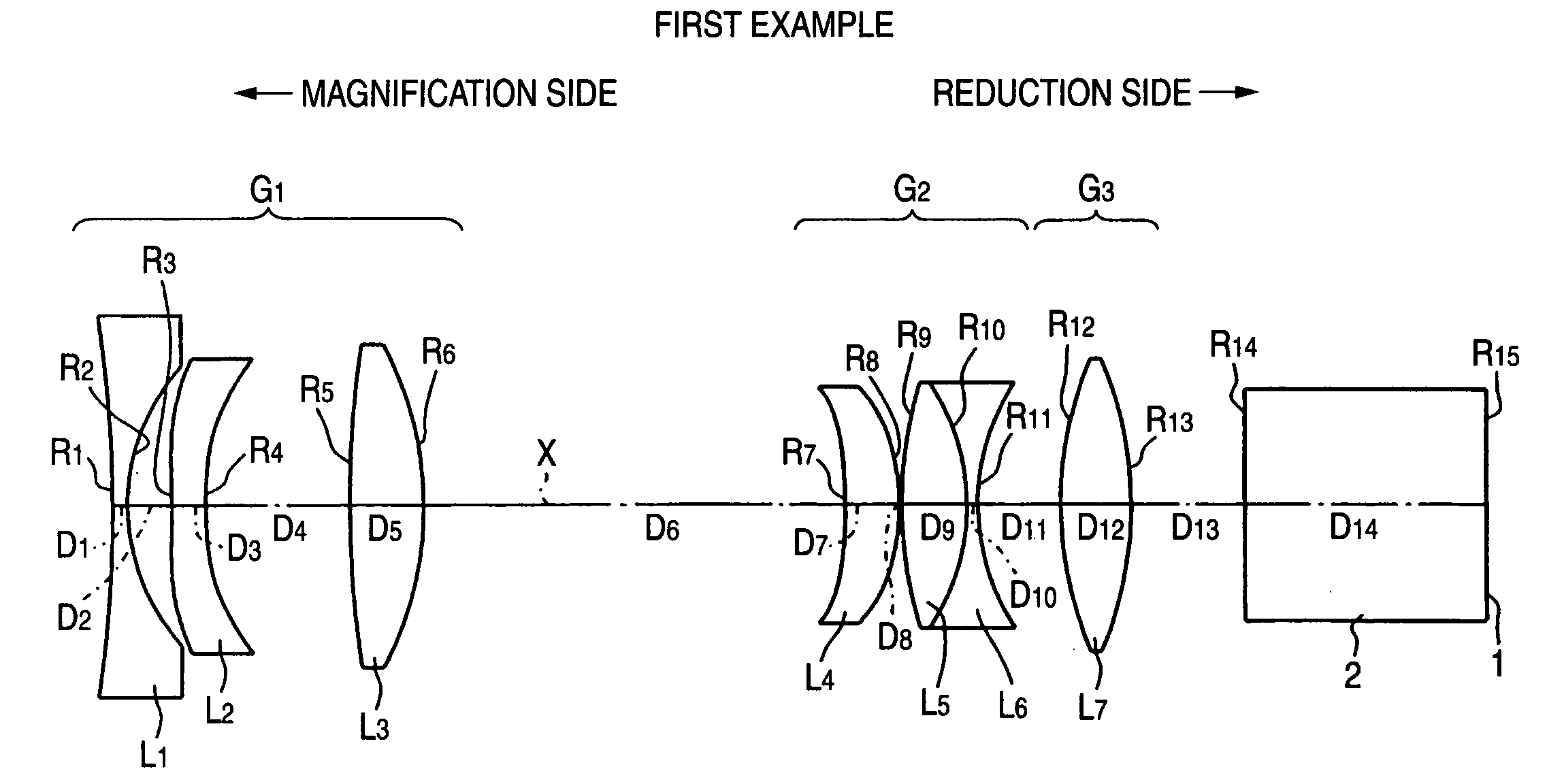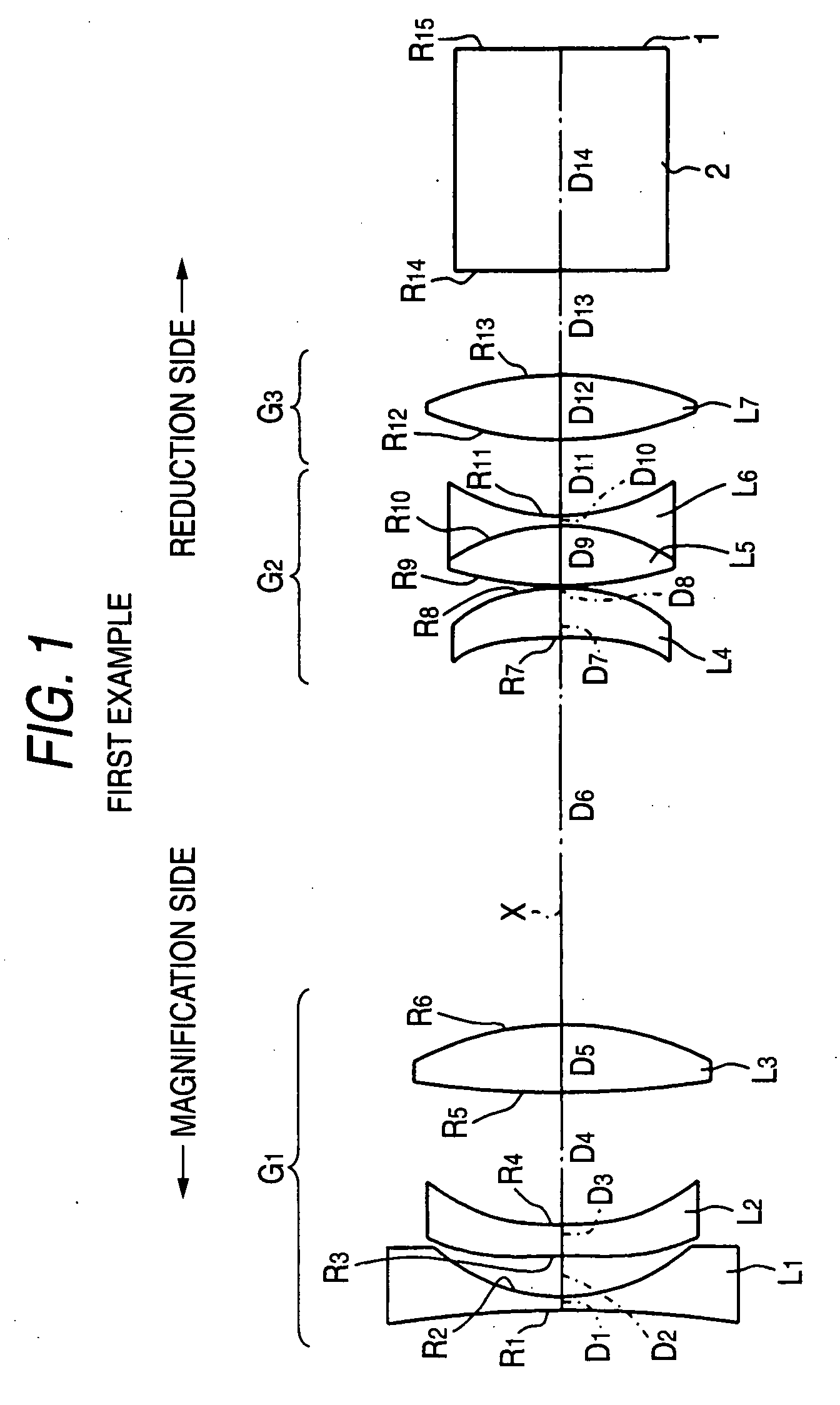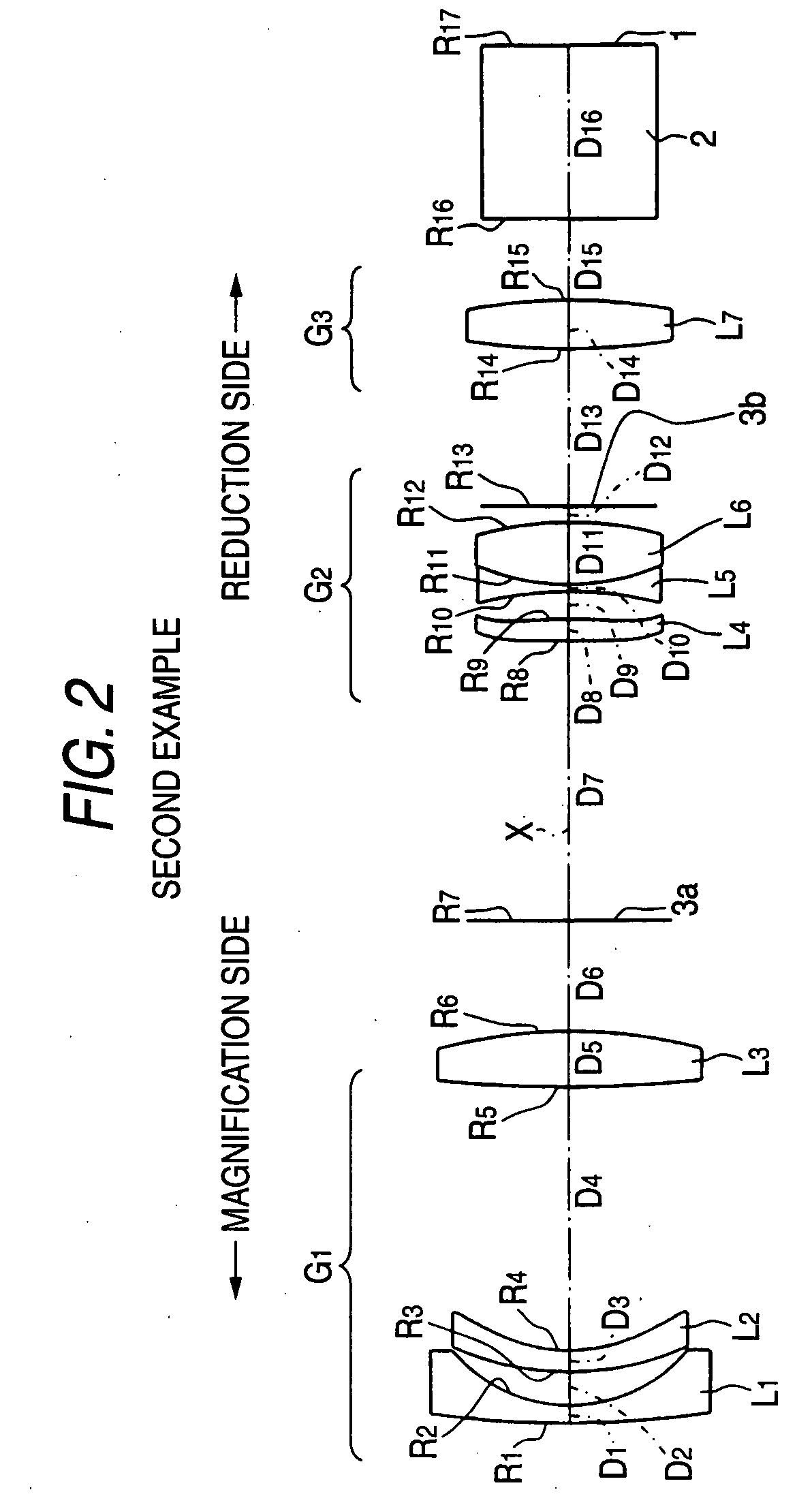Projection lens and projection type display device using the same
a projection lens and display device technology, applied in the field of projection lenses and projection type display devices using the same, can solve the problems of lens unsuitability for application, performance degradation, and reduction of the number of constituent lenses
- Summary
- Abstract
- Description
- Claims
- Application Information
AI Technical Summary
Benefits of technology
Problems solved by technology
Method used
Image
Examples
example 1
[0059]As described above, the projection lens according to the example 1 is configured as shown in FIG. 1. That is, in this projection lens, the first lens group G1 includes the first lens L1 which is a biconcave lens, the second lens L2 formed of a biconcave lens in the vicinity of the optical axis, and the third lens L3 formed of a biconvex lens in order from the magnification side. Also, the second lens group G2 includes the fourth lens L4 which is a positive meniscus lens whose concave surface is directed to the magnification side, and the cemented lens constructed by the fifth lens L5 formed of a biconvex lens and the sixth lens L6 formed of a biconcave lens. Also, the third lens group G3 includes the seventh lens L7 formed of a biconvex lens. In this case, the first lens L1 is formed of a glass lens.
[0060]In this example 1, radii R of curvature of respective lens surfaces (normalized under the assumption that a focal length of the entire lens system is set to 1; the same rule ...
example 2
[0067]The schematic configuration of a projection lens according to the example 2 is shown in FIG. 2. The projection lens according to the example 2 is configured substantially similarly to that according to the example 1. A major difference from the example 1 is that the first lens L1 and the second lens L2 of the first lens group G1 are formed of a negative meniscus lens whose convex surface is directed to the magnification side, that the cemented lens of the second lens group G2 is constructed by the fifth lens L5 formed of a biconcave lens and the sixth lens L6 formed of a biconvex lens, and that masks 3a, 3b are disposed. However, it is not necessary to provide the masks. Also, a diaphragm may be employed as the mask. Positions of the masks 3a, 3b are not limited to those shown in FIG. 2, and setting positions of the masks 3a, 3b may be changed appropriately.
[0068]In this example 2, radii R of curvature of the respective lens surfaces, center thicknesses of the respective lense...
example 3
[0074]The schematic configuration of a projection lens according to the example 3 is shown in FIG. 3. The projection lens according to the example 3 is configured substantially similarly to that according to the example 1. A major difference from the example 1 is that the second lens L2 Of the first lens group G1 is formed of a negative meniscus lens whose convex surface is directed to the magnification side, that the second lens group G2 includes the cemented lens configured by the fourth lens L4 formed of a biconcave lens and the fifth lens L5 formed of a biconvex lens and the sixth lens L6 formed of a biconvex lens in the vicinity of the optical axis, and that a mask 3 is provided. However, it is not necessary to provide the mask 3, and a diaphragm may be employed as the mask 3. Also, a position of the mask 3 is not limited to that shown in FIG. 3, and a setting position of the mask 3 may be changed appropriately.
[0075]In this Example 3, radii R of curvature of the respective len...
PUM
 Login to View More
Login to View More Abstract
Description
Claims
Application Information
 Login to View More
Login to View More - R&D
- Intellectual Property
- Life Sciences
- Materials
- Tech Scout
- Unparalleled Data Quality
- Higher Quality Content
- 60% Fewer Hallucinations
Browse by: Latest US Patents, China's latest patents, Technical Efficacy Thesaurus, Application Domain, Technology Topic, Popular Technical Reports.
© 2025 PatSnap. All rights reserved.Legal|Privacy policy|Modern Slavery Act Transparency Statement|Sitemap|About US| Contact US: help@patsnap.com



